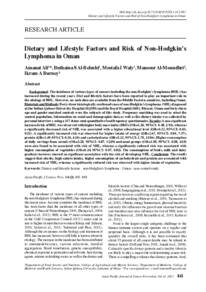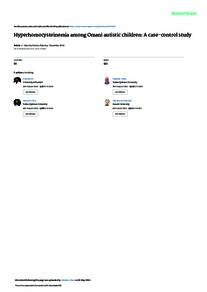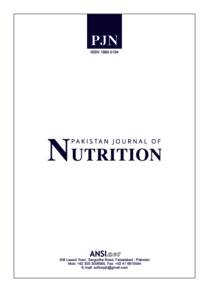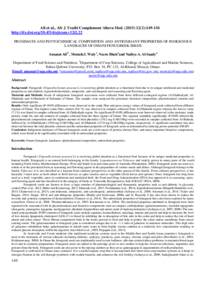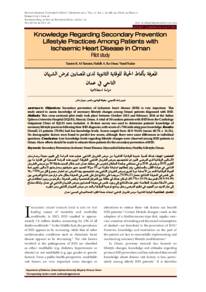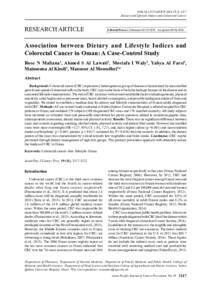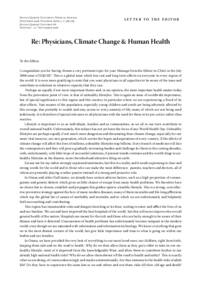Document
Dietary and lifestyle factors and risk of non-hodgkin's lymphoma in Oman.
Identifier
DOI: 10.7314/APJCP.2013.14.2.841
Contributors
Al-Belushiyah, Buthaina S., Author
Waly, Mostafa I., Author
Al-Moundhri, Mansour., Author
Burney, Ikram A., Author
Publisher
Asian Pacific Organization for Cancer Prevention.
Gregorian
2013
Language
English
Subject
English abstract
Background: The incidence of various types of cancers including the non-Hodgkin's lymphoma (NHL) has increased during the recent years. Diet and lifestyle factors have been reported to play an important role in the etiology of NHL. However, no such data are available from the Middle Eastern countries, including Oman. Materials and Methods: Forty-three histologically confirmed cases of non-Hodgkin's lymphoma (NHL) diagnosed at the Sultan Qaboos University Hospital (SQUH) and the Royal Hospital (RH), Muscat, Oman and forty-three age and gender matched controls were the subjects of this study. Frequency matching was used to select the control population. Information on social and demographic data as well as the dietary intake was collected by personal interviews, using a 117-items semi-quantitative food frequency questionnaire. Results: A non-significant increased risk of NHL was observed with higher body mass index (BMI) (OR=1.20, 95%CI: 0.45, 2.93), whereas a significantly decreased risk of NHL was associated with a higher educational level (OR=0.12, 95%CI: 0.03, 0.53). A significantly increased risk was observed for higher intake of energy (OR=2.67, 95%CI: 0.94, 7.57), protein (OR=1.49, 95%CI: 0.54, 4.10) and carbohydrates (OR=5.32, 95%CI: 1.78, 15.86). Higher consumption of daily servings from cereals (OR=3.25, 95%CI: 0.87, 12.09) and meat groups (OR=1.55, 95%CI: 0.58, 4.15) were also found to be associated with risk of NHL, whereas a significantly reduced risk was associated with higher consumption of vegetables (OR=0.24, 95%CI: 0.07, 0.82). The consumption of fruits, milk and dairy products however showed no significant association with the risk of developing NHL. Conclusion: The results suggest that obesity, high caloric intake, higher consumption of carbohydrate and protein are associated with increased risk of NHL, whereas a significantly reduced risk was observed with higher intake of vegetables.
Member of
ISSN
1513-7368
Resource URL
Category
Journal articles

